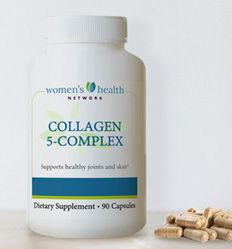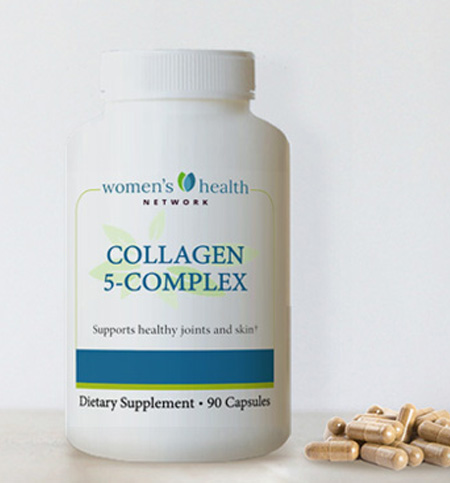Authored by Jacqueline Tourville, WHN Managing Editor
Chronic stress doesn’t just weigh on your mind — it can show up on your face. Excess cortisol, the body’s primary stress hormone, can break down collagen and elastin, contributing to wrinkles, fine lines, acne, puffiness and that perpetually “tired” look many of us know all too well.

The good news? “Cortisol face” doesn’t have to be permanent. With the right daily habits and targeted nutritional support, you can bring cortisol back into balance and restore your skin’s natural glow.
6 ways to restore cortisol balance and reverse premature signs of aging
1. Mind your diet
While diet alone won’t regulate cortisol, it can buffer the damage stress causes to your skin.
Foods to add: Omega-3s (salmon, walnuts, chia seeds), antioxidants (berries, green tea) and plenty of colorful vegetables.
Foods to avoid: Cut back on sugar and refined carbs, which spike both blood sugar and cortisol.
2. Supplement with nutrients that soak up cortisol
Are you dealing with insomnia or constantly feeling “wired” and anxious? These common stress-related symptoms are signs that your body’s stress response needs more direct support.
That’s where targeted nutrients can make a difference. Natural compounds like magnesium, L-theanine and passion flower have been studied for their ability to lower excess cortisol, promote relaxation and support more restful sleep. You’ll find this powerful trio in our exclusive anti-stress formula, Serinisol, designed to calm the mind, ease sleep disruptions and help bring cortisol patterns back to normal.
3. Lower cortisol with breathwork
The next time you’re stressed, try this cortisol-lowering breathing pattern:
- Inhale slowly through your nose for a count of 4, expanding your belly and ribs.
- Hold your breath for a count of 7.
- Slowly exhale your breath through your mouth for a count of 8.
Even two minutes of conscious breathing can turn on your parasympathetic nervous system, helping to reduce stress signals and lower cortisol output.
4. Prioritize sleep
A single restless night can throw off your cortisol rhythm. Aim for 7–9 hours of quality sleep by keeping a regular bedtime, dimming lights an hour before bed and avoiding late-night screen time. Your skin — and mood — will thank you.
5. Move your body mindfully
Exercise can reduce cortisol over time, but intensity matters. Gentle, mindful movement like yoga, walking or tai chi lowers stress hormones while improving circulation and supporting collagen health, leaving both your skin and spirit refreshed.
6. Support your skin’s collagen as you recover from stress
High cortisol can accelerate collagen breakdown, leading to sagging, fine lines and dullness. Taking a high-quality collagen supplement gives your skin immediate support while you work behind the scenes to lower stress and help your body restore its own collagen production. You don’t need to wait (or stress) to start improving skin elasticity, firmness and overall radiance.
Bonus tip! Sip away stress
Try a “cortisol cocktail” — a simple, non-alcoholic drink made with ingredients that support your adrenals and keep cortisol in check. It’s a refreshing way to unwind when stress strikes. Try our recipe!
“Cortisol face” isn’t just cosmetic — it’s your body signaling that stress is taking a toll
By adopting even a few daily habits to balance cortisol, you can smooth and brighten your skin while boosting energy, mood and resilience. Start small, build gradually and watch the difference — inside and out.












